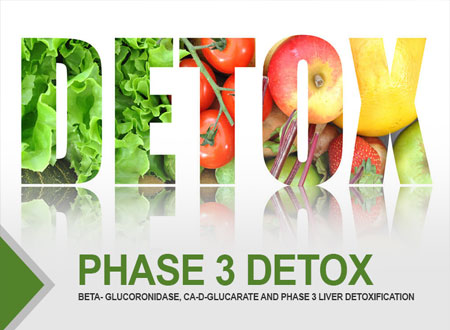



Conjugated xenobiotics and toxins are pumped into the bile and intestinal lumen by the antiporter system so they can be excreted. At this stage, effective elimination of these compounds is dependent on a number of factors, with diet and microflora playing a pivotal role. Deconjugation of these metabolites by hydrolytic enzymes such as beta-glucuronidase, sulfatase and beta-lyase results in subsequent enterohepatic recirculation, shunting the toxin back to the liver where it will, once again, go through the biotransformation process.
Resident bacteria in the GI tract are largely responsible for the production of these enzymes, with beta-glucuronidase recognised as particularly significant, being present throughout the GI tract, due to the fact that glucuronides are the largest class of xenobiotic conjugates excreted in the bile.[6] This process is attributed to enzyme activity produced significantly by Clostridium perfringens as well as Escherichia coli and Klebsiella sp.,[7] suggesting that dysbiosis may contribute to increased metabolite deconjugation and enterohepatic recirculation. Elevated beta-glucuronidase activity is associated with an increased risk for various cancers, particularly hormone-dependent cancers such as breast, prostate, and colon cancers.[8]

The implications of this further support the notion that diet and probiotic supplementation may assist with normal detoxification processes. In addition, calcium d-glucurate, a nutrient found in grapefruit, apples, oranges, broccoli, and brussels sprouts is known to be a beta-glucuronidase inhibitor via its metabolite D-glucaro-1,4-lactone. Oral supplementation of calcium-D-glucarate has also been shown to inhibit beta-glucuronidase activity [9] resulting in the proper elimination of conjugated toxins.
According to Dr Chris Shade, an environmental and analytical chemist who specialises in the human detoxification system, the most significant cause of Phase III dysfunction is inflammation, especially in the gut. When Phase III is blocked a negative feedback loop results in the down regulation of Phase II enzymes. Intermediate metabolites produced in Phase I are then at risk of building up resulting in increased oxidative damage which further impairs detoxification capacity.[10]
The clinical goal here should include supporting the GI tract by reducing inflammation, binding toxins in the gut and promoting efficient elimination. Therapeutic considerations may include high-bioavailability curcumin, chlorella and water soluble fiber. Consider also supplementing with nutrients required for normal Phase II function and antioxidant support which specifically includes glutathione and R-alpha-lipoic acid. These nutrients have poor bioavailability and would therefore have limited therapeutic value unless provided in a more advanced delivery system. Liposomal technology allows these nutrients to be delivered in nano-sized vesicles for enhanced absorption through the mucosa of the mouth.
The human detoxification system is a delicate and complex process involving three distinct phases. However, it is only very recently that we have elucidated the function and significance of Phase III. We now understand that any successful therapeutic management of detoxification requires us to restore, manage and augment this phase, which can then have profound implications for health and resilience.
REFERENCES
Watch Dr. Golding talk on Integrative and Anti-Aging Medicine.
Sign up for our newsletter to find out more about the exciting world of integrative medicine
